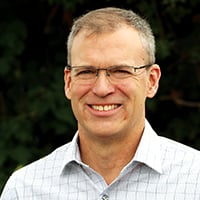2 min read
Distributed Energy Resources (DER) and the Electric Utility: The Shift from “If” to “How”
 Erik Felt
:
September 10, 2019
Erik Felt
:
September 10, 2019

Recently, I have noticed a very real change in the tone of the conversations around Distributed Energy Resources (DER). For the past five or so years, the utility industry has been inundated with advertising, articles, seminars and conversations around smartgrid (and microgrid, and a myriad of other terms) and how it would have a major impact on the industry. But something changed in the first half of 2019: The conversation went from “If” to “How.”
To clarify the terms, ‘If’ meant “maybe” or “possibly” DER would happen. In other words, there was time to think about DER and have ‘what if’ conversations. But then something happened. The economics of power generation shifted. Sometime in the past year or so, the headlines and reports started coming out that showed that renewables were cheaper to install and operate than comparable fossil (fueled) installations.
Thus, the conversation has shifted, and now ‘How’ is on the center stage. While all utilities may not end up with microgrids, all utilities will have DER. In modern utilities, ‘How’ becomes very important. DER is inevitable, and now the question is how it can be implemented and run in existing operations.
The really good news for utilities who are just now incorporating DER, is that much of the pain of transforming from a complex and interconnected, centralized operational model to a distributed one, has been done.
In fact, utilities really couldn’t be luckier. We now live in a world where applications do not run the utility; now, the data does.
And in DER environments, the power of data is growing. Utilities are in a great position to “seize the data” through Industrial Internet of Things (IIoT) environments. These environments are run through a layered databus architecture, which provides utilities with security, high fidelity/quality, fault-tolerance and scalability to transform their environments.
So now that we are in the “How” moment, it’s time for the industry to work together to continue building the world's most complex engineering feat (the power grid) in the neural/digital grid in today’s data-driven environments. DER will require new control methods, new communication means, new operational parameters and more.
To learn more, please read my new white paper on How to Gain Visibility and Collaborative Control over DER.
About the author
 Erik Felt is the Market Development Director for Future Grid at RTI where he is focused on bringing the benefits of IIoT standards and systems into the utility market. Erik joined RTI after spending seven years with GE Power (including five years with Alstom Grid prior to the GE acquisition) in the Software Solutions/Energy Connections business unit. His focus was on software solutions in the areas of SCADA, Energy Management Systems (EMS), Generation Management Systems (GMS) and Synchrophasor applications. Throughout his career, Erik has worked with utilities, generation companies and ISO/RTOs worldwide. Early in his career, he worked in distribution engineering at two Midwestern utilities and in a consulting role on numerous automation projects for electric utilities.
Erik Felt is the Market Development Director for Future Grid at RTI where he is focused on bringing the benefits of IIoT standards and systems into the utility market. Erik joined RTI after spending seven years with GE Power (including five years with Alstom Grid prior to the GE acquisition) in the Software Solutions/Energy Connections business unit. His focus was on software solutions in the areas of SCADA, Energy Management Systems (EMS), Generation Management Systems (GMS) and Synchrophasor applications. Throughout his career, Erik has worked with utilities, generation companies and ISO/RTOs worldwide. Early in his career, he worked in distribution engineering at two Midwestern utilities and in a consulting role on numerous automation projects for electric utilities.
Learn More:
Microgrid Optimization using OpenFMB »
Posts by Tag
- Developers/Engineer (180)
- Technology (79)
- Connext Suite (77)
- News & Events (75)
- 2020 (54)
- Aerospace & Defense (53)
- Standards & Consortia (51)
- Automotive (38)
- 2023 (34)
- 2022 (29)
- IIoT (27)
- 2025 (25)
- Leadership (24)
- Healthcare (23)
- 2024 (22)
- Connectivity Technology (21)
- Cybersecurity (20)
- 2021 (18)
- Culture & Careers (15)
- Military Avionics (15)
- FACE (13)
- Connext Pro (10)
- JADC2 (10)
- ROS 2 (10)
- Connext Tools (7)
- Connext Micro (6)
- Databus (6)
- Transportation (5)
- Case + Code (4)
- Connext (4)
- Connext Cert (4)
- Energy Systems (4)
- FACE Technical Standard (4)
- AI (3)
- Oil & Gas (3)
- Research (3)
- Robotics (3)
- Connext Conference (2)
- Edge Computing (2)
- Golden Dome (2)
- MDO (2)
- MS&T (2)
- RTI Labs (2)
- TSN (2)
- ABMS (1)
- C4ISR (1)
- DOD (1)
- ISO 26262 (1)
- L3Harris (1)
- LabView (1)
- MOSA (1)
- MathWorks (1)
- National Instruments (1)
- Simulation (1)
- Tech Talks (1)
- UAM (1)
- Videos (1)
- eVTOL (1)
 Success-Plan Services
Success-Plan Services